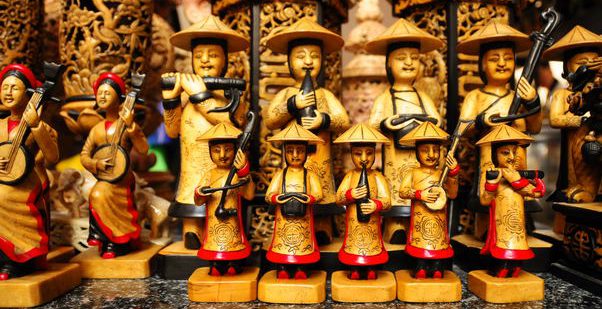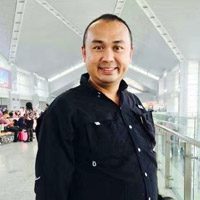Technology changes with time, but the fundamentals and recipes in photography remains. This article was first published in 2006, revised in 2018
Recent years have seen a keen interest among many photographers in venturing into Vietnam for photography opportunities. Initially, I thought this was probably due to some tourism promotion gimmicks by some tour agency until I was urged by some of my students to organise a photography trip to Vietnam. I read through a few travel guide books, especially my favourite DK Eye Witness Guide. A trip was thus organised during the Christmas to explore central Vietnam (Danang, Hoi An, My Son, Hue) and then southwards to Ho Chi Minh, Can Tho and My Tho.
For my first visit to Vietnam, I shot about 9000 pictures over a period of 8 days, shooting continuously about 10 frames if the angle is good. I brought along my usual set of APSC lenses 18-200mm, 12-24mm and 10.5mm fisheye. The built in flashlight can be conveniently activated as and when needed to fill in light.
One of our difficulties faced was the limited ability of the local guide in conversing in English. We had to speak within the simplest means to avoid any miscommunication. Even the pronunciation of the city names left much to be desired. Hoi An can be easily pronounced by us, but Hue, Can Tho, My Son and My Tho are pronounced differently from what we would expect them to be correct. What was embarrassing was when I told the hotel receptionist that our next stop is Can Tho (I pronounced as the usual Canto as in the Canto Pub), she stared at me blankly, only to realise a few days later in Can Tho that it should be pronounced as “Kern Therd”. My Tho is to be pronounced as “Mi Tho”, Hue to be pronounced as “Huay”.
Some Tips for travelling:
- You are not likely to spend more than 2 weeks in the location, hence time is a limiting factor. A good local guide who knows a bit of photography will be useful as he or she will know when to stop when the bus pass by some interesting subjects or places.
- It is good to know more about the places you are going to, getting the information from the guide books, internet resources and photography books. In other words, plan what you would like to shoot.
- Get some reference shots from stock libraries so that you can prepare yourself what you are in for. Print them and ask your local guide to help you.
- It is important that transport, accommodation and food should be properly organised. While we do not expect to stay in 5 stars hotel everyday or travel in luxury, it will be dangerous if you stay in a no star hotel where security can be in doubt or the vehicles tend to break down in the middle of the desert!
- Shoot more, shortlist everyday and keep a backup set of images in a separate hard disk.
- Do not eat the food by the roadside (anywhere) until you are “localised”.
- It is good to have an extra set of equipment on standby, in case your equipment malfunctions.
- Bring sufficient medicine, for sore throat, cough, flu etc.
The following pictures shall provide some insights to the places visited and recommended to be revisited. There is this certain charm in Vietnam which kept me mesmerized even when I touched down in Singapore. The rustic charm, the friendly people, the unique culture…..I shall definitely explore the Northern Vietnam soon. I hope to present the Part 2 in due time.

Matrix metering, Daylight White Balance, ISO800, Aperture Priority Mode, Shutter speed 1/250s, Aperture f5.6, 18-200mm
The streets of Hoi An reveal interesting findings where modernisation has not really set in yet in this ancient port town. This picture was shot through the glass of our spacious tour bus (a 20 seater bus for just 9 of us). We were able to move freely on the bus to shoot through the windows from either sides.
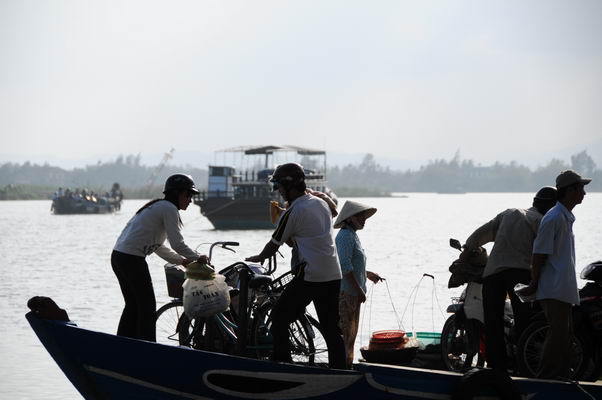
Matrix metering, Daylight White Balance, ISO250, Aperture Priority Mode, Shutter speed 1/1600s, Aperture f5.3, 18-200mm
The ferry continued to fetch the people and their wares between the shores in Hoi An. This picture is technically challenging as I had to photograph the people against a brighter background. The DSLR is able to capture the details of the people well despite the contrast in the lighting.

Matrix metering, Daylight White Balance, ISO400, Aperture Priority Mode, Shutter speed 1/50s, Aperture f5.6, 18-200mm
This portrait is by no means what one would expect to represent the beautiful ladies in Vietnam. While chewing the betel nuts, this old lady in Hoi An did not realise that her lips were stained in red!

Matrix metering, Daylight White Balance, ISO320, Aperture Priority Mode, Shutter speed 1/500s, Aperture f5.3, 18-200mm
The 2 wheels are still a common mean of transport. Many Vietnamese ride on bicycles or motorbikes everyday. The texture on the wall caught my attention and the bird cage complement the bicycle very well.

Centre Weighted metering, Daylight White Balance, ISO320, Aperture Priority Mode, Shutter speed 1/500s, Aperture f4.8, 18-200mm
Hoi An is also known for its marble. In this marble carving workshop, the workers in action are worth photographing. The white reflective surface of the marble served as a good reflector to brighten the workers’ clothes.
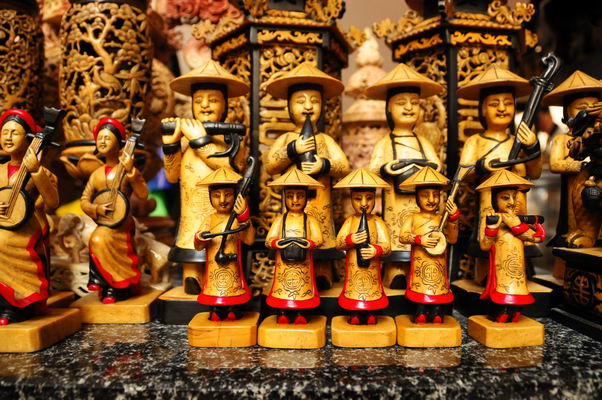
Centre Weighted metering, Daylight White Balance, ISO800, Aperture Priority Mode, Shutter speed 1/50s, Aperture f3.5, 18-200mm
Even if the check in luggage is not big enough to buy bulky souvenirs, no harm photographing the statues. I once told my students, “By taking this picture, even if you did not buy any of the statues, you can always print the picture and put on the table top.”
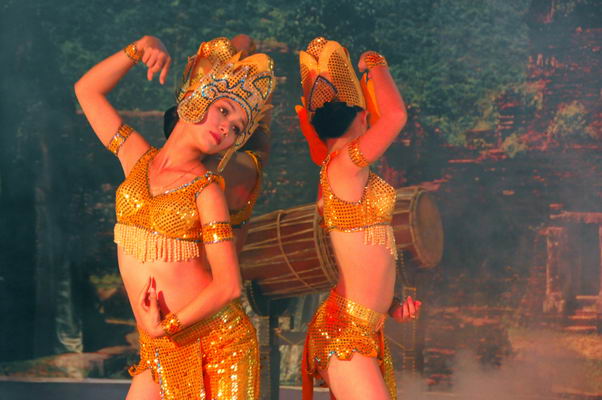
Matrix metering, Daylight White Balance, ISO1600, Aperture Priority Mode, Shutter speed 1/50s, Aperture f5.3, 18-200mm
My Son, a short drive from Hoi An, was home to the ancient Cham people. We were treated to an eye opening Apsara dance in this simple theatre. The ancient ruins of the temple complexes continue to stand till this day.

Centre Weighted metering, Daylight White Balance, ISO200, Aperture Priority Mode, Shutter speed 1/500s, Aperture f5, 18-200mm
We stayed in La Residence in Hue. I told the bell boy to pose for this picture. This was the former residence of the French governor, situated right beside the famed Perfume River. Legend has it that the princess bride of the Cham King bathed in perfume water and the servants later poured the water into the river. This was how the Perfume River got its name. What was unbelievable was there exist free wireless internet connection in this hotel!
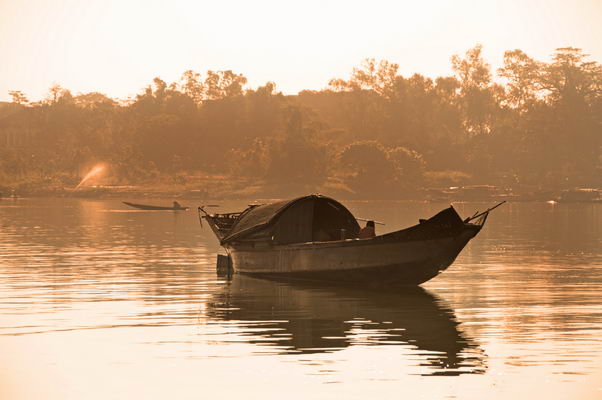
Centre Weighted metering, Daylight White Balance, ISO200, Aperture Priority Mode, Shutter speed 1/2000s, Aperture f5.3, 18-200mm
The morning was a bit foggy when we set off for a boat ride along the Perfume River. The old boats which are still put in use today reveals the rustic side of Hue.

Centre Weighted metering, Daylight White Balance, ISO640, Aperture Priority Mode, Shutter speed 1/250s, Aperture f4.2, 18-200mm
A visit to the Thien My Pagoda temple enable us to encounter the monks for the first time in Vietnam. This monk was deep in thoughts as he walked around. I located this angle and when he walked into the frame, I fired away.

Centre Weighted metering, Daylight White Balance, ISO200, Program Mode, Shutter speed 1/640s, Aperture f4, 10.5mm fisheye, EV -0.7
One of the former holiday retreats of the ancient Kings in Vietnam, it now serve as the tomb for the late King. I attempted to isolate the building by framing it with the shed using the fisheye lense.

Centre Weighted metering, Daylight White Balance, ISO200, Aperture Priority Mode, Shutter speed 1/1000s, Aperture f4.2, 18-200mm
Smoke gets in your eyes. Some burning activity took place in this ancient tomb in Hue. The effect was dramatise by the setting sun which sent its rays piercing through the snoke. I waited until there are people before I fired away.

Centre Weighted metering, Daylight White Balance, ISO1250, Aperture Priority Mode, Shutter speed 1/30s, Aperture f4.8, 18-200mm
The receptionists at the La Residence hotel stood in contrast to the characters in the painting behind them.

Centre Weighted metering, Daylight White Balance, ISO400, Aperture Priority Mode, Shutter speed 1/3200s, Aperture f4, 18-200mm
One of the ways to photograph Vietnam’s tallest and biggest flag pole in Hue is to shoot with the leaves as frame at the top.

Centre Weighted metering, Daylight White Balance, ISO250, Aperture Priority Mode, Shutter speed 1/800s, Aperture f5.6, 18-200mm
The fisherman was trying his luck as he threw the net from his “fishing vessel” in Danang.

Centre Weighted metering, Daylight White Balance, ISO640, Program Mode, Shutter speed 1/1000s, Aperture f5.6, 18-200mm
The river in Can Tho remained busy. We were taking a boat ride to experience the life on the water as well as the floating market. They peddled their wares and food in these small boats.

Matrix metering, Daylight White Balance, ISO320, Aperture Priority Mode, Shutter speed 1/1250s, Aperture f5, 18-200mm, EV -0.3
The old folded door serves as a good backdrop. I waited for a while until this old lady came into the picture. I fired away.Centre Weighted metering, Daylight White Balance, ISO800, Aperture Priority Mode, Shutter speed 1/400s, Aperture f3.5, 10.5mm fisheye

Centre Weighted metering, Daylight White Balance, ISO800, Aperture Priority Mode, Shutter speed 1/400s, Aperture f3.5, 10.5mm fisheye
This is a Cao Dai temple in My Tho, between Can Tho and Ho Chi Minh city. We were lucky to arrive at the temple when there was a prayer session.
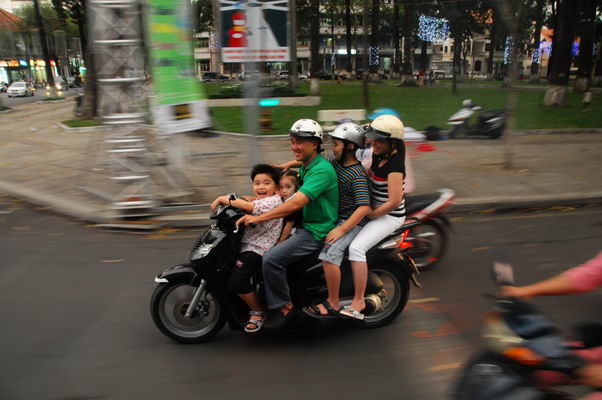
Centre Weighted metering, Daylight White Balance, ISO1250, Shutter Speed Priority Mode, Shutter speed 1/15s, Aperture f5, 18-200mm
I tried to do panning while shooting from the bus in Ho Chi Minh. As the traffic was slow and the bikes moved at about the same speed as the bus, I just have to select the right subject, set the shutter speed to 1/15 s to get the panning shot.



